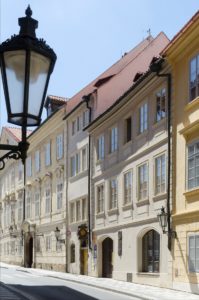TOP TEN
National Museum
Václavské náměstí 68, 115 79 Praha 1
www.nm.cz
The National Museum is the largest and third oldest museum in the Czech Republic, having been founded in 1818. The public associates the institution primarily with the monumental Neo-Renaissance Historical Building, the most prominent landmark of Wenceslas Square in Prague. During an extensive reconstruction, it was connected with the equally interesting New Building of the National Museum through a multimedia corridor, giving rise to the unique Museum Complex. From the summer of 2021, visitors have a chance to walk through new modern expositions dedicated to history and nature. But the National Museum is not just this building. As part of its activities, the Museum collects, researches and presents artifacts from scientific, historical and artistic disciplines, which it then exhibits in the 17 buildings it administers or protects in several stand-alone depositories. Its library is the second largest public library in the Czech Republic and its collections contain more than thirteen million objects.

National Gallery in Prague
Staroměstské náměstí 12, 110 15 Praha 1
www.ngprague.cz
The National Gallery in Prague, whose tradition goes back to 1796, is among the oldest world’s public collections of art. Six buildings, precious in terms of architecture, house masterpieces coming from the Central European Middle Ages period, and the masters’ extraordinary pieces of work, ranging from Rubens, Gauguin to Picasso and Asian arts besides creation by the key personalities of the Czech visual arts.
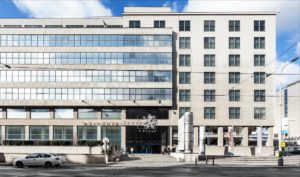
National Open Air Museum
Palackého 147, 756 61 Rožnov pod Radhoštěm
www.vmp.cz
The Museum documents, preserves, keeps, and makes public folk architecture, and interprets a way of living in the country over the past 200 years, from the mid-18th century. Opened in Rožnov pod Radhoštěm in relation to the “Wallachian Year 1” first held in July 1925, it is one of the oldest open air museums in Europe. It shows the vernacular architecture of the Moravian Wallachia region, both from urban and rural environments; it cares for buildings in Pustevny designed by Dušan Jurkovič. It makes accessible its open air museums Veselý Kopec and Betlém Hlinsko. Architecture and folk culture of Haná (ethnographic region) is shown in Příkazy, whereas culture and bonds of native people with the country in the former Sudetenland and its post-war change can be seen in the open air museum in Zubrnice.
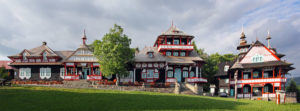
National Technical Museum
Kostelní 1320/42, 170 78 Praha 7
www.ntm.cz
The National Technical Museum is the largest Czech institution of its kind. It exhibits collections on fourteen permanent exhibitions and many temporary displays. What belongs to the jewels in the Transport exposition is a racing car Mercedes Benz W154, in which Rudolf Caracciola won the Grand Prix in 1938. The exposition of Astronomy boasts precious exhibits, such as Bürgi’s sextant used by Johannes Kepler. The Czech assets to science are represented by, e.g. the contact-lenses apparatus in the exposition of Chemistry, which Otto Wichterle used in 1961 for producing the first soft contact lenses.

Moravian Museum
Zelný trh 6, 659 37 Brno
www.mzm.cz
The Moravian Museum is one of the largest and oldest memory institutions in the Central-European space. Established in 1817, it is dedicated to the history of a unique territory, Moravia, whose dwellers created the so-called Venus of Dolní Věstonice, the first known clay sculpture and the earliest portrait of a woman in the world as early as 25,000 years ago. The figure is now listed as the National Cultural Monument. Among other carefully conserved unique objects is, e.g. the plough that used Maria Theresa’s son, future Emperor Joseph II in 1769, or extensive numismatic, theatre and literature collections. The Museum houses unique nature history collections from around the world.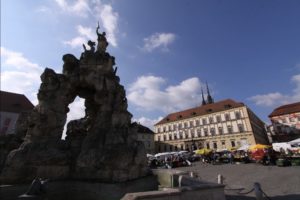
Moravian Gallery in Brno
Husova 18, 662 26 Brno
www.moravska-galerie.cz
The Moravian Gallery in Brno is the second largest art museum in the Czech Republic. It was founded in 1961 after unifying collections from the Moravian Museum of Applied Arts and the Picture Gallery of the Moravian Museum. It operates five buildings: Pražák Palace; the Museum of Applied Arts; Governor’s Palace; Architect Dušan Jurkovič’s own villa; and Josef Hoffmann’s Natal House in Brtnice, which is the workplace shared with the Museum of Applied Arts (MAK), Vienna. It is the only art museum in our country that perceives fine arts culture in overall, and works with free art coming from the earliest times to the present times, with photograph, applied arts, graphic design and architecture.
Virtual tours, on-line collections, podcasts: #moravskagaleriedoma
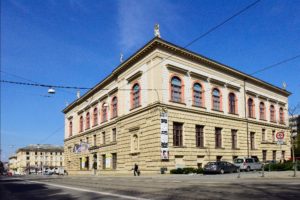
Museum of Decorative Arts in Prague
17. listopadu 2, 110 00 Praha 1
www.upm.cz
The Museum of Decorative Arts in Prague aims to provide visitors with inspiration, insight and experience. Since 2017, it has been expanding the scope of activities in the restored historical building that forms one cultural whole with the concert and exhibition building Rudolfinum; the Academy of Arts, Architecture and Design; and the Faculty of Arts, Charles University, Prague. Rich collections of international importance are vast and unique and contain historical and present art glass, porcelain, textile, fashion, furniture, graphics and photographs. The House of Black Madonna hosts a unique exhibition of Czech Cubism in applied arts and architecture.
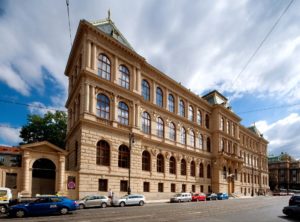
Olomouc museum of Art
Denisova 47, 771 11 Olomouc
www.olmuart.cz
The Museum of Art in Olomouc was established in 1951. It is housed in three buildings: the Museum of Modern Art, the Olomouc Archdiocesan Museum and the Kroměříž Archdiocesan Museum holding collections of ancient, modern and contemporary arts. The Museum boasts a rich collection of fine arts culture of Central Europe, which is to be kept in the Central European Forum Olomouc new building. The collection contains 185 thousand objects. The Olomouc Archdiocesan Museum was awarded the European Heritage Label in 2016.
Virtual tour: https://artsandculture.google.com/streetview/muzeum-um,, MUO – Google Arts and Culture: https://artsandculture.google.com/partner/muzeum-um%C4%9Bn%C3%AD-olomouc-olomouc-museum-of-art,, for the most valuable artwork in the Museum’s collections go on www.muo.cz; the Museum’s project Central European Art Database (CEAD) aiming to build up a dynamic on-line database of fine arts and culture of post-war Central Europe: http://cead.space/, podcasts http://muo.cz/podcast-muzea-umeni-olomouc/, videos: https://www.youtube.com/user/muzeumumeniolomouc, educational programmes: http://muo.cz/budte-v-kontaktu/inspirujte-se-s-nasimi-edukatory-a-tvorte-doma-s-detmi–3306/

Silesian Museum
Nádražní okruh 31, 746 01 Opava
www.szm.cz
The Silesian Museum in Opava opens an imaginary gate to Silesia. The Museum houses exhibits ranging from living creatures or inanimate nature, prehistory, history to art history. Founded in 1814, it is the oldest public museum on the territory of today’s Czech Republic. It administers six museum buildings and complexes. The land Silesia itself is presented in the Historic Exhibition Building in Opava. Topics, such as defense or military science, are covered in expositions situated in the Hlučín-Darkovičky Czechoslovak Fortification Complex and the World War II Memorial in Hrabyně. An extensive collection of plants is grown in the Nový Dvůr Arboretum in Stěbořice. Literature is on display in the Petr Bezruč Memorial in Opava and the Petr Bezruč Chalet in Ostravice.

Jewish Museum in Prague
U Staré školy 141/1, 110 00 Praha 1
www.jewishmuseum.cz
Founded in 1906, the Jewish Museum in Prague is one of the oldest of its kind in Europe. Its collection was taken over during the war by the Prague Jewish community, which initiated the establishment of the so-called Jewish Central Museum. Although Nazis approved the project, other intentions were behind that. After the Communist coup d’état, the Museum was nationalized in 1950. In October 1994 the Museum buildings and collections were returned to the Jewish community and the Jewish Museum in Prague was established as a non-governmental institution dedicated to the cultural history of Czech and Moravian Jews. As such, it is developing rich exhibition, professional, educational, publishing, and cultural activities.

National Pedagogical Museum and Library of J. A. Comenius
Valdštejnská 161/20, 118 00 Praha 1
www.npmk.cz
www.comenius350.cz
The Museum was established in 1892 thanks to Czech teachers as expression of efforts to preserve and document historical traditions of Czech education, pedagogy and the legacy of John Amos Comenius. Since 2011, a library has been part of the institution whose collection consists of nearly half a million volumes – books (especially textbooks), periodicals, audio documents, electronic documents and maps. Between 2020 and 2022, the Museum coordinates the National Celebrations of the Anniversary of John A. Comenius, which includes the campaign ‘Comenius to Classes!’.
